Abstract
Yoked pairs of experimentally naive pigeons were exposed to a modified autoshaping procedure in which key pecking by the leader birds postponed both keylight termination and access to grain for the leader and the follower bird. Key pecking developed and was maintained in all birds and continued through two reversals of roles in the yoked procedure. Although temporal control developed more slowly in follower birds, asymptotic temporal distributions of key pecking were similar for all birds in both leader and follower roles; maximum responding occurred soon after keylight onset and decreased to a minimum prior to reinforcement. Response distributions for both leader and follower birds were described by Killeen's (1975) mathematical model of temporal control. Follower birds received response-independent reinforcement, and the development by these birds of temporal distributions which are minimal immediately prior to reinforcement is without precedent in Pavlovian appetitive conditioning. However, maintenance of key pecking by the leader birds, whose responses postponed both stimulus-change and food reinforcement, supports an interpretation of autoshaped and automaintained key pecking as responding elicited by signaled grain presentation.
Keywords: automaintenance, temporal control, stimulus-change reinforcement, autoshaping, key peck, pigeons
Full text
PDF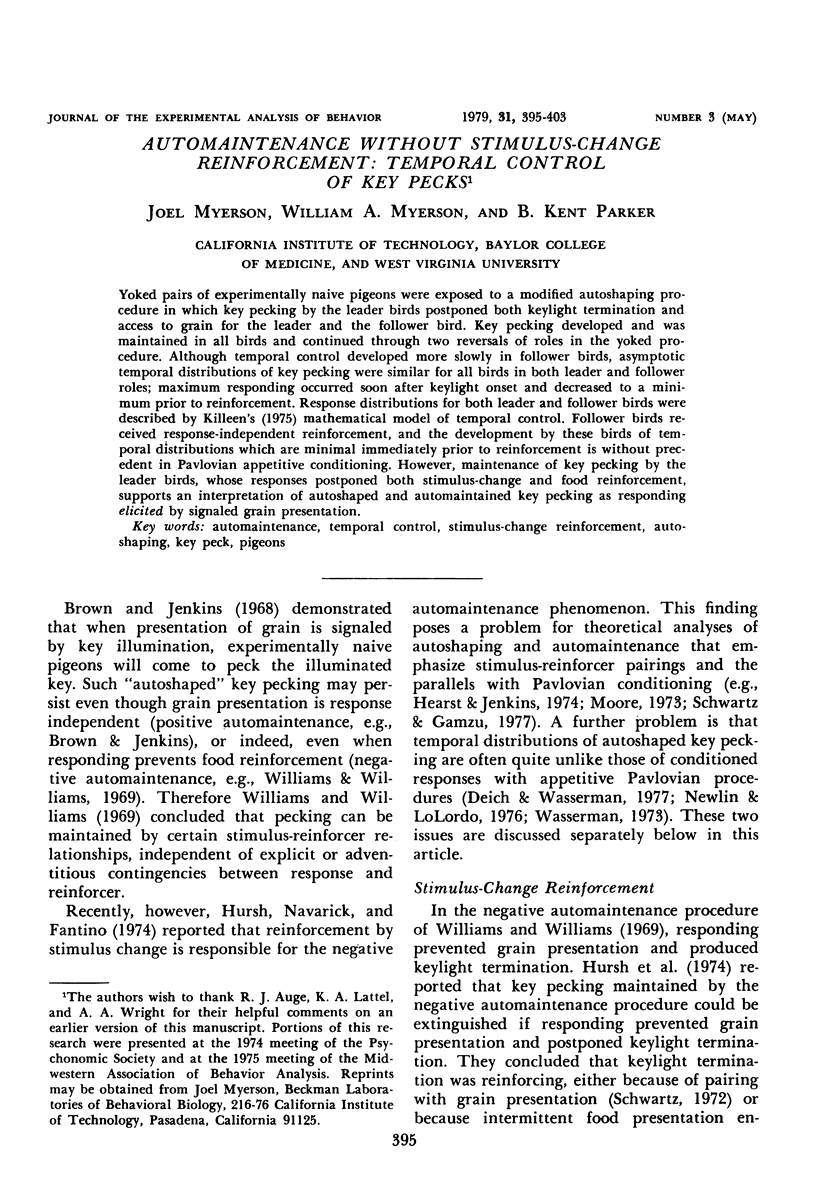
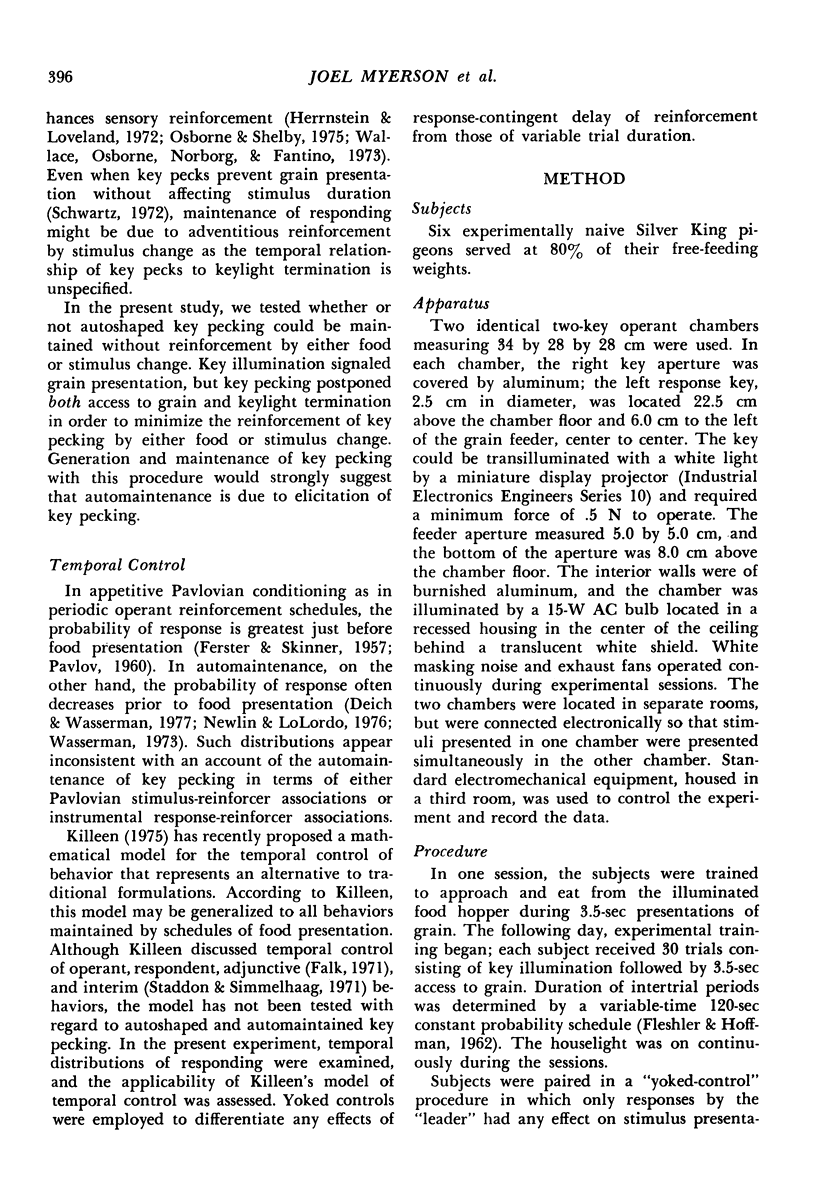
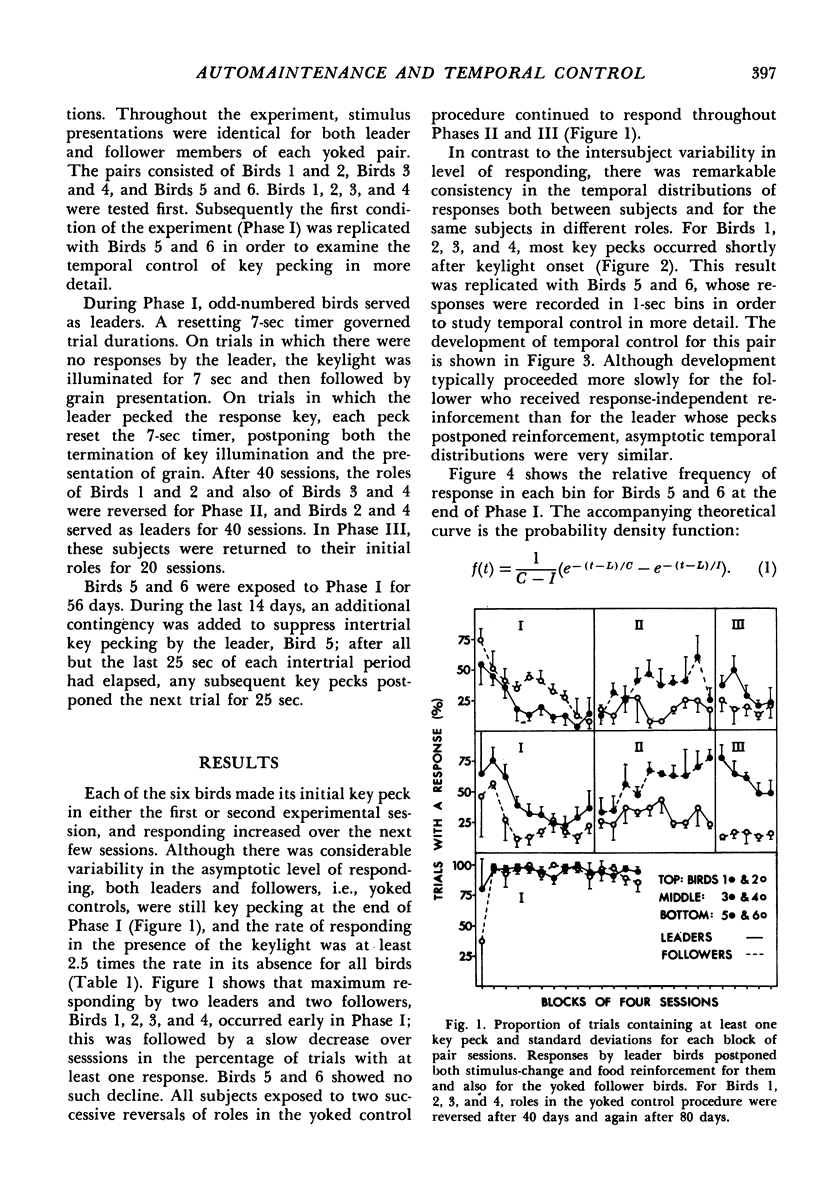
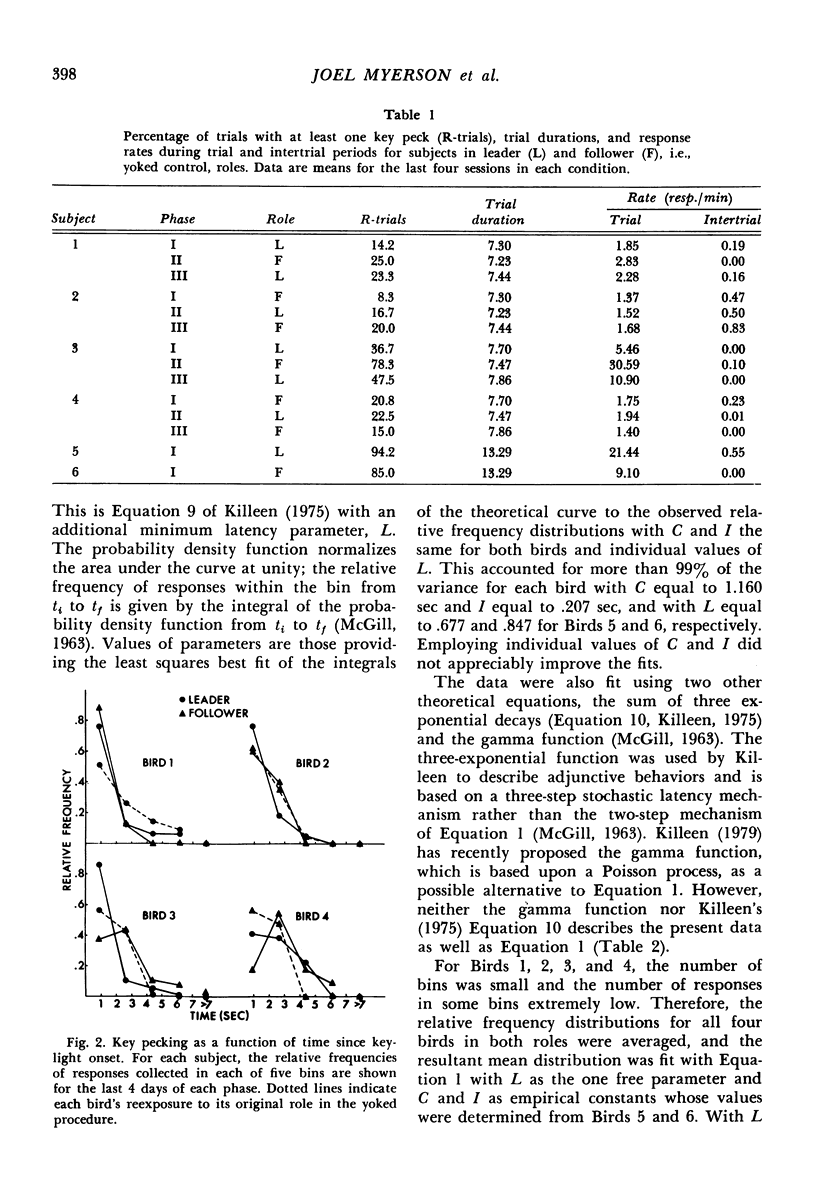
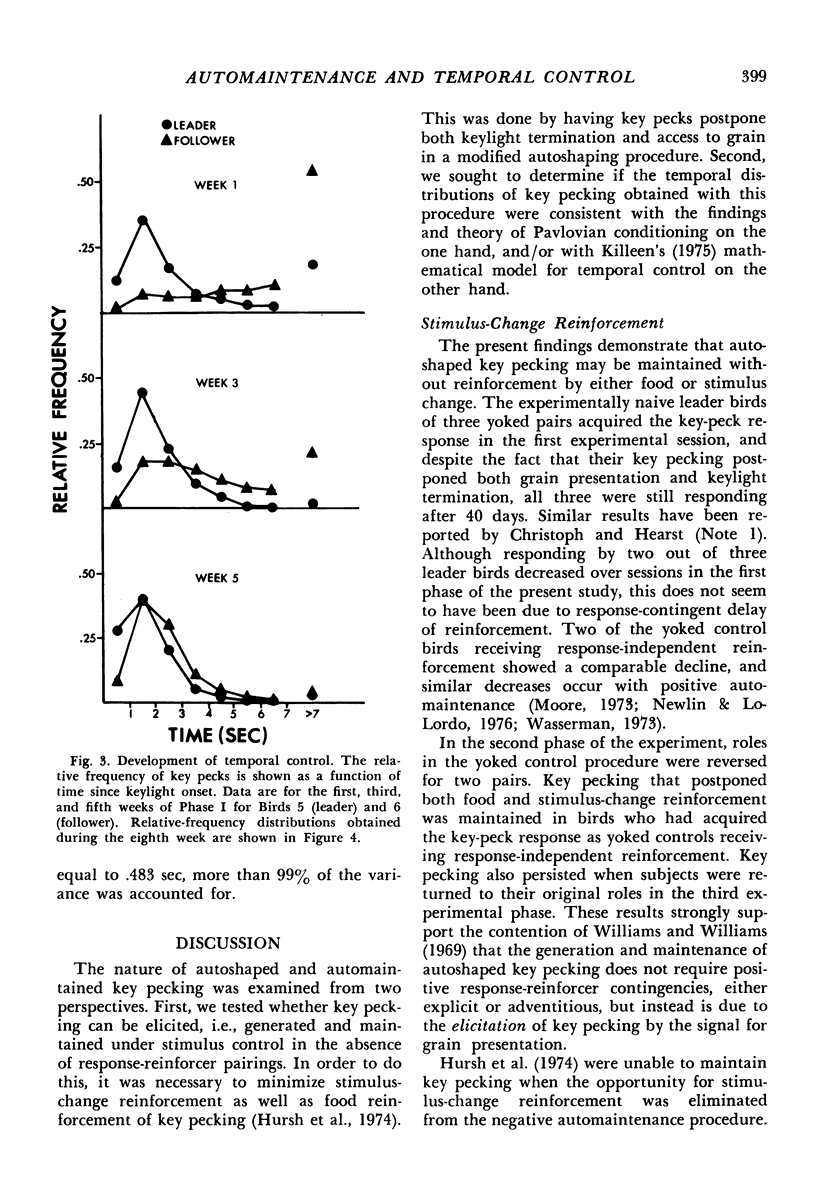
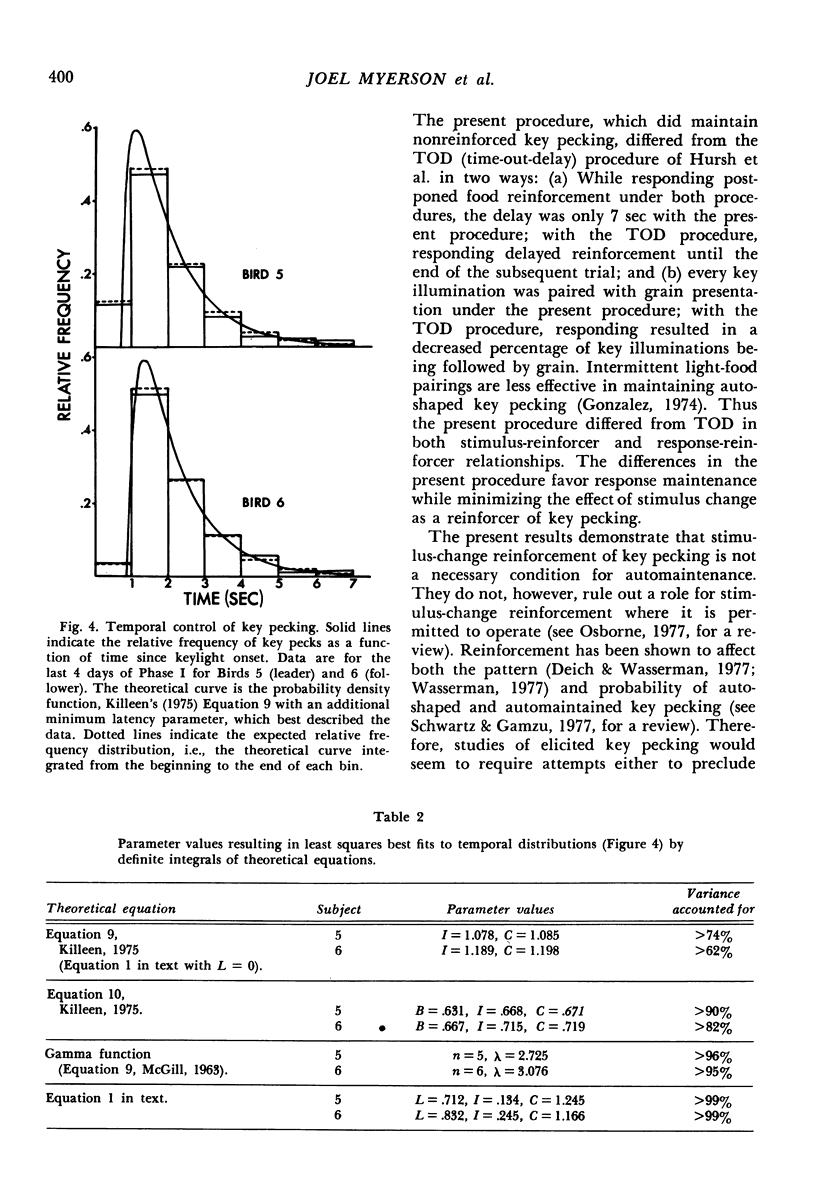
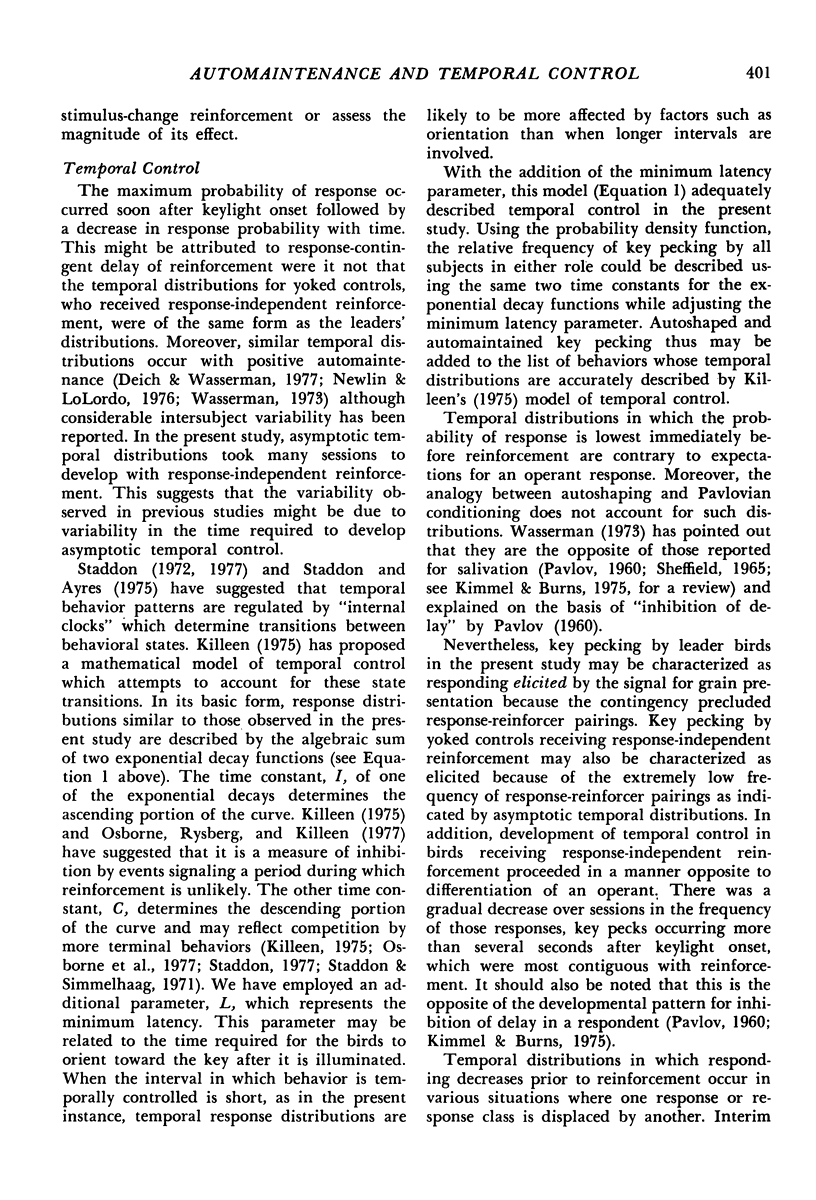
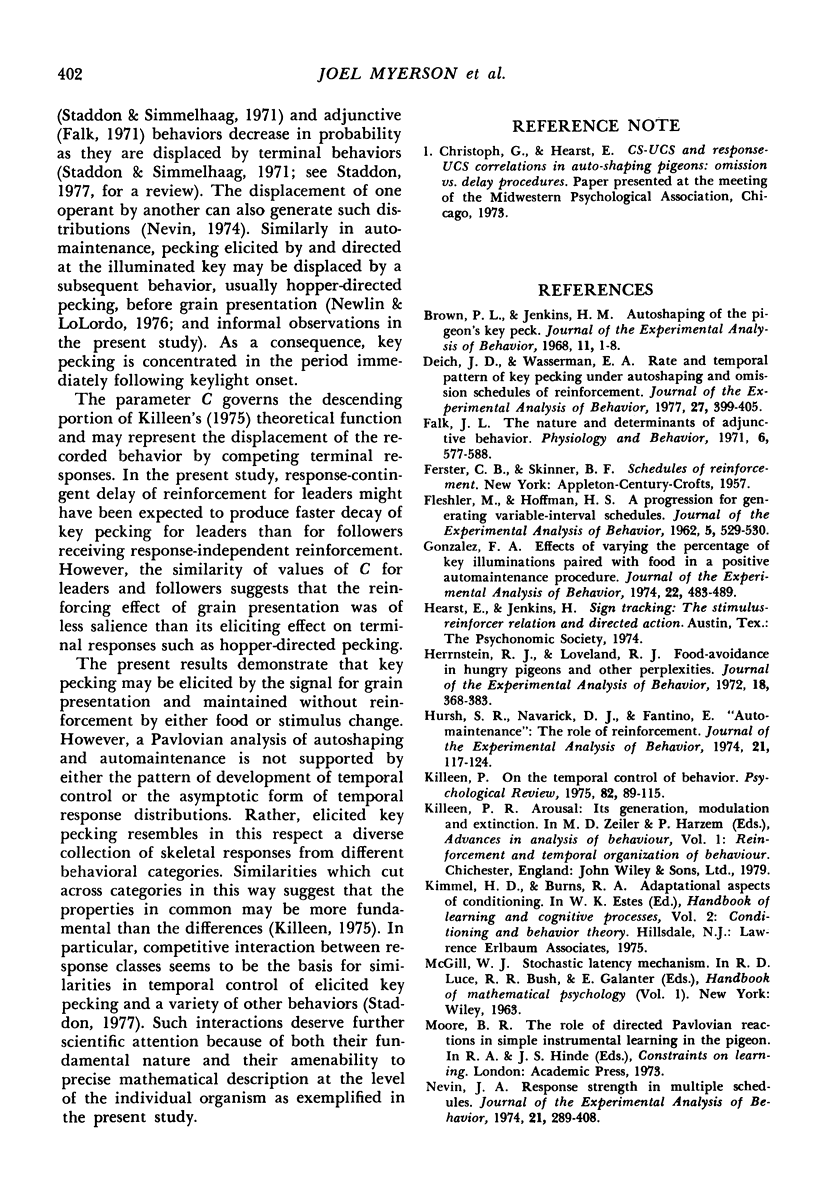
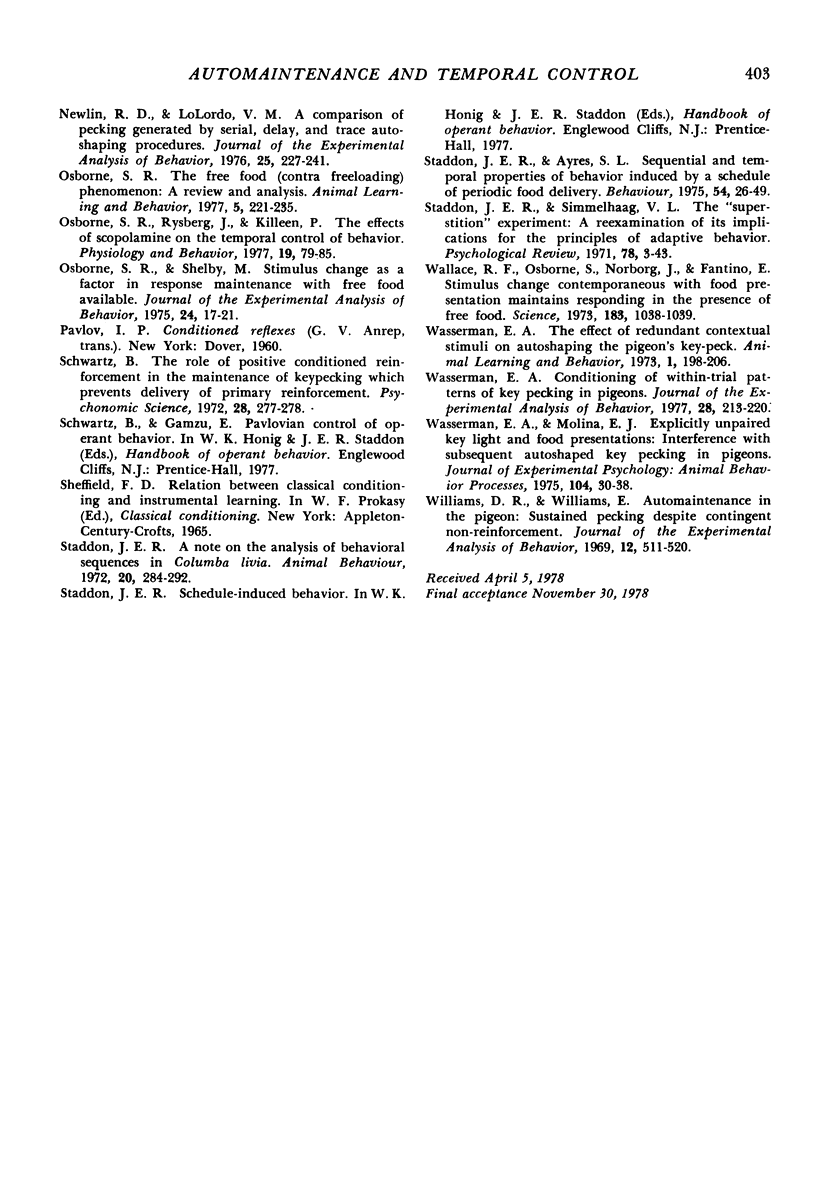
Selected References
These references are in PubMed. This may not be the complete list of references from this article.
- Brown P. L., Jenkins H. M. Auto-shaping of the pigeon's key-peck. J Exp Anal Behav. 1968 Jan;11(1):1–8. doi: 10.1901/jeab.1968.11-1. [DOI] [PMC free article] [PubMed] [Google Scholar]
- Deich J. D., Wasserman E. A. Rate and temporal pattern of key pecking under autoshaping and omission schedules of reinforcement. J Exp Anal Behav. 1977 Mar;27(2):399–405. doi: 10.1901/jeab.1977.27-399. [DOI] [PMC free article] [PubMed] [Google Scholar]
- FLESHLER M., HOFFMAN H. S. A progression for generating variable-interval schedules. J Exp Anal Behav. 1962 Oct;5:529–530. doi: 10.1901/jeab.1962.5-529. [DOI] [PMC free article] [PubMed] [Google Scholar]
- Falk J. L. The nature and determinants of adjunctive behavior. Physiol Behav. 1971 May;6(5):577–588. doi: 10.1016/0031-9384(71)90209-5. [DOI] [PubMed] [Google Scholar]
- Gonzalez F. A. Effects of varying the percentage of key illuminations paired with food in a positive automaintenance procedure. J Exp Anal Behav. 1974 Nov;22(3):483–489. doi: 10.1901/jeab.1974.22-483. [DOI] [PMC free article] [PubMed] [Google Scholar]
- Herrnstein R. J., Loveland D. H. Food-avoidance in hungry pigeons, and other perplexities. J Exp Anal Behav. 1972 Nov;18(3):369–383. doi: 10.1901/jeab.1972.18-369. [DOI] [PMC free article] [PubMed] [Google Scholar]
- Hursh S. R., Navarick D. J., Fantino E. "Automaintenance": the role of reinforcement. J Exp Anal Behav. 1974 Jan;21(1):117–124. doi: 10.1901/jeab.1974.21-117. [DOI] [PMC free article] [PubMed] [Google Scholar]
- Nevin J. A. Response strength in multiple schedules. J Exp Anal Behav. 1974 May;21(3):389–408. doi: 10.1901/jeab.1974.21-389. [DOI] [PMC free article] [PubMed] [Google Scholar]
- Newlin R. J., Lolordo V. M. A comparison of pecking generated by serial, delay, and trace autoshaping procedures. J Exp Anal Behav. 1976 Mar;25(2):227–241. doi: 10.1901/jeab.1976.25-227. [DOI] [PMC free article] [PubMed] [Google Scholar]
- Osborne S. R., Rysberg J., Killeen P. The effects of scopolamine on the temporal control of behavior. Physiol Behav. 1977 Jul;19(1):79–85. doi: 10.1016/0031-9384(77)90163-9. [DOI] [PubMed] [Google Scholar]
- Osborne S. R., Shelby M. Stimulus change as a factor in response maintenance with free food available. J Exp Anal Behav. 1975 Jul;24(1):17–21. doi: 10.1901/jeab.1975.24-17. [DOI] [PMC free article] [PubMed] [Google Scholar]
- Wallace R. F., Osborne S., Norborg J., Fantino E. Stimulus change contemporaneous with food presentation maintains responding in the presence of free food. Science. 1973 Dec 7;182(4116):1038–1039. doi: 10.1126/science.182.4116.1038. [DOI] [PubMed] [Google Scholar]
- Wasserman E. A. Conditioning of within-trial patterns of key pecking in pigeons. J Exp Anal Behav. 1977 Nov;28(3):213–220. doi: 10.1901/jeab.1977.28-213. [DOI] [PMC free article] [PubMed] [Google Scholar]
- Williams D. R., Williams H. Auto-maintenance in the pigeon: sustained pecking despite contingent non-reinforcement. J Exp Anal Behav. 1969 Jul;12(4):511–520. doi: 10.1901/jeab.1969.12-511. [DOI] [PMC free article] [PubMed] [Google Scholar]


